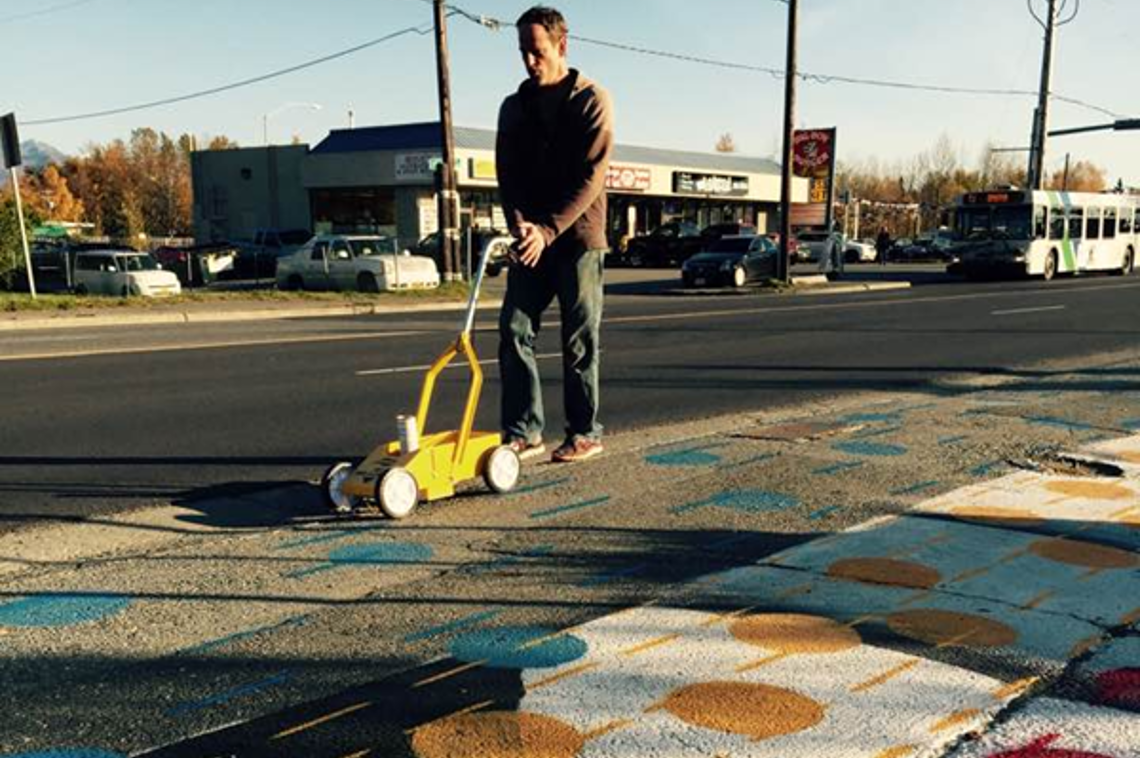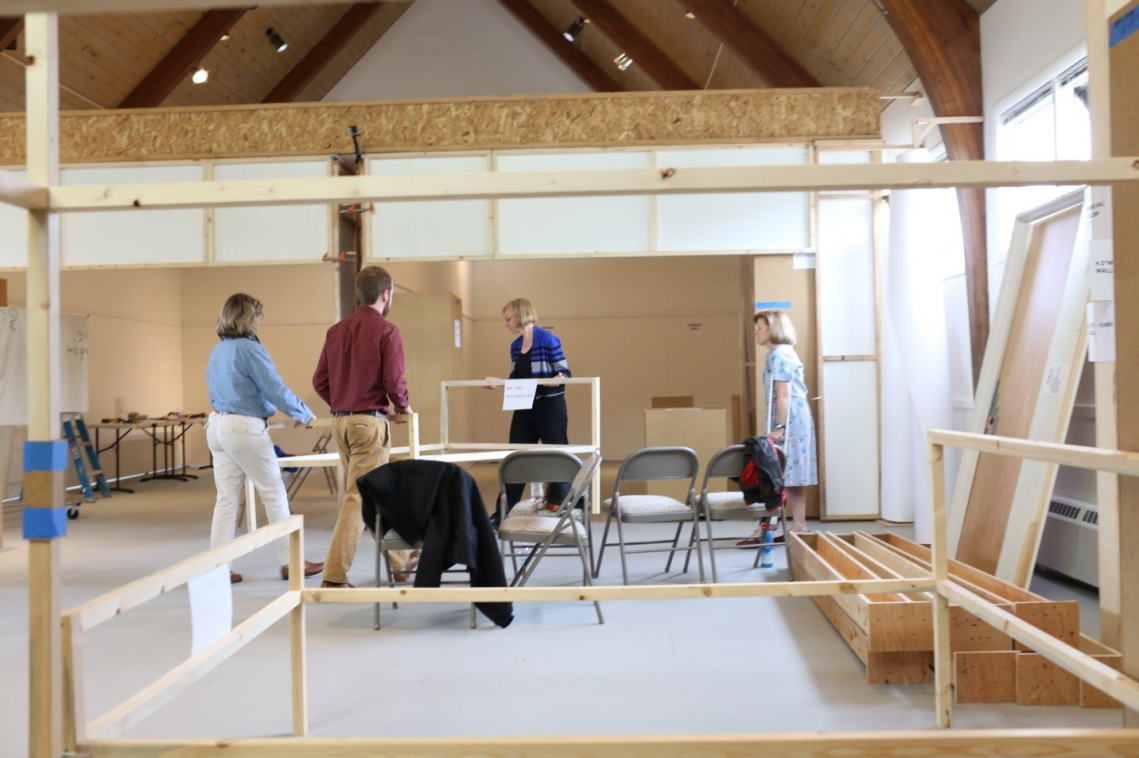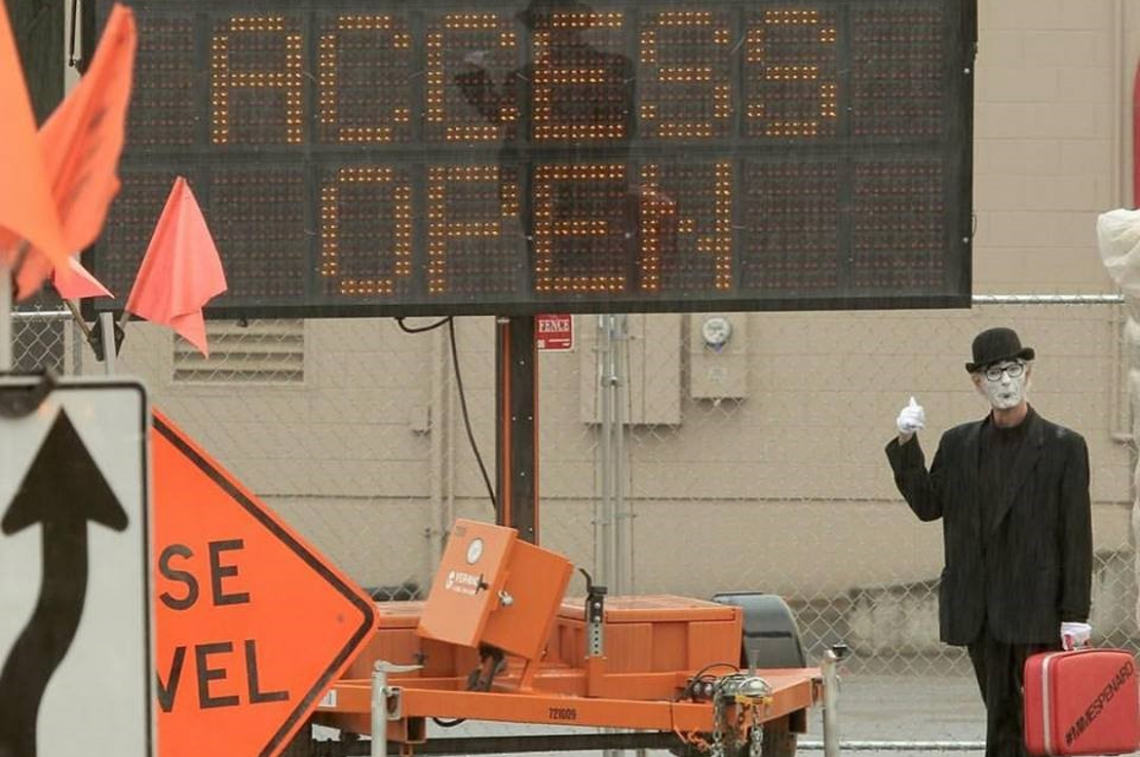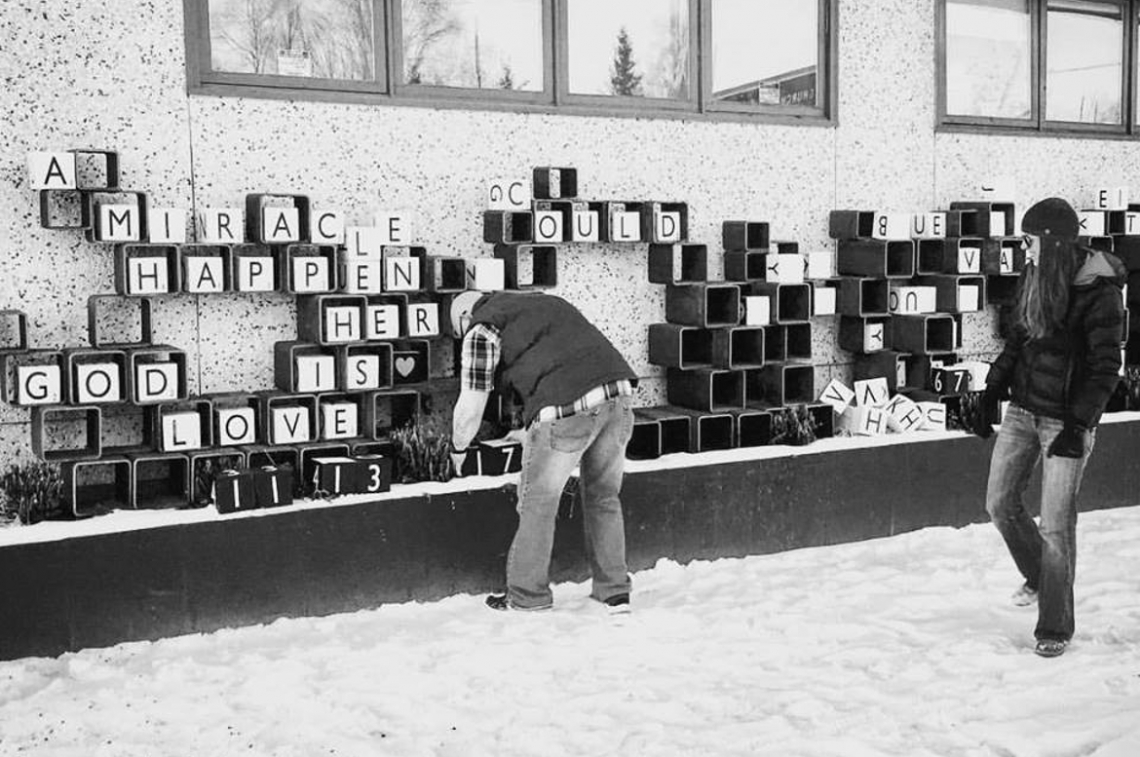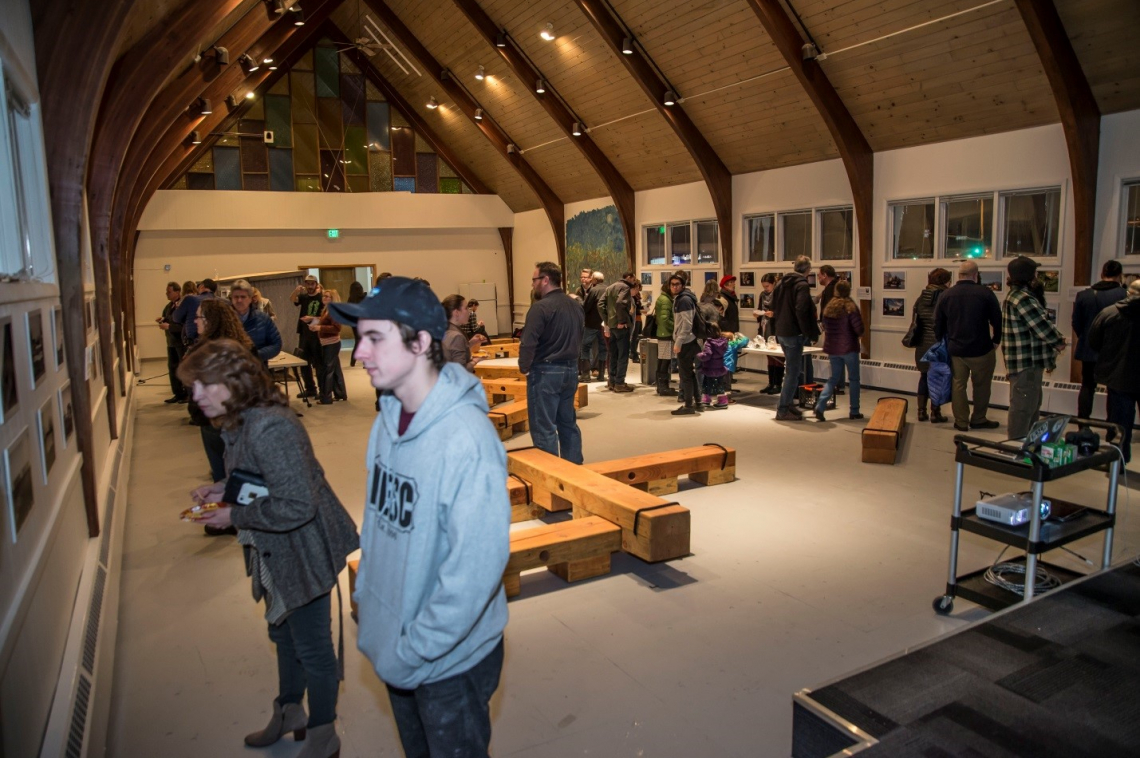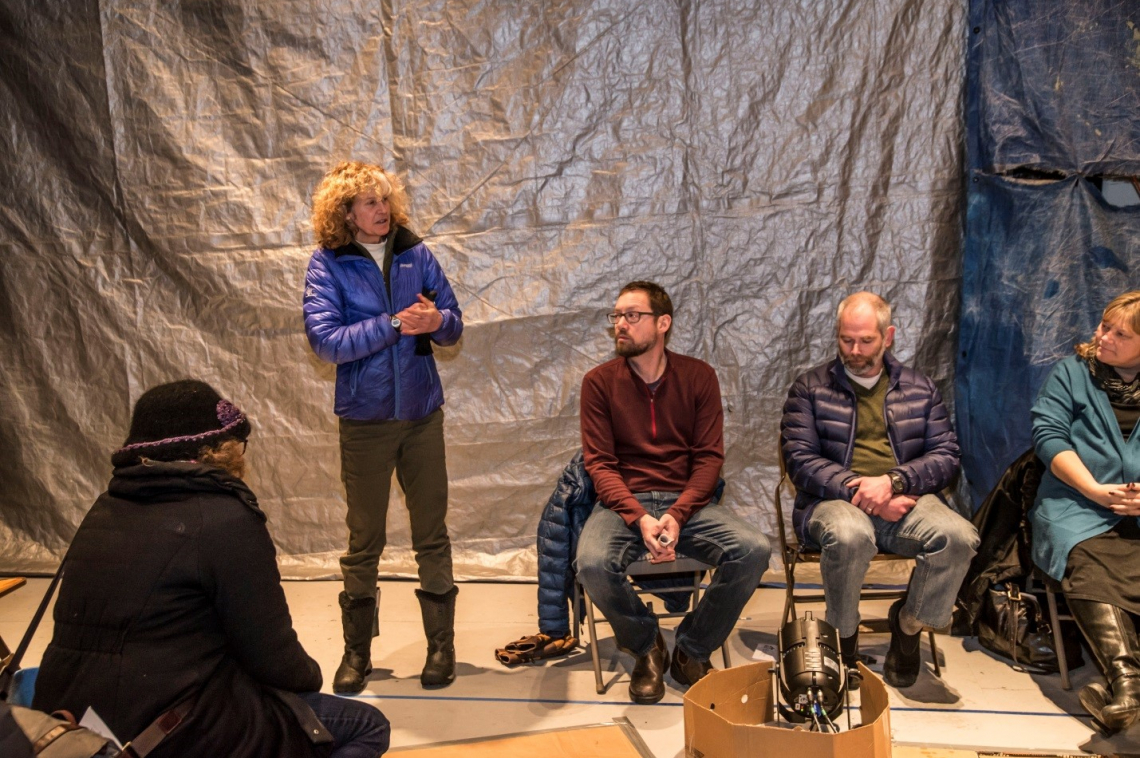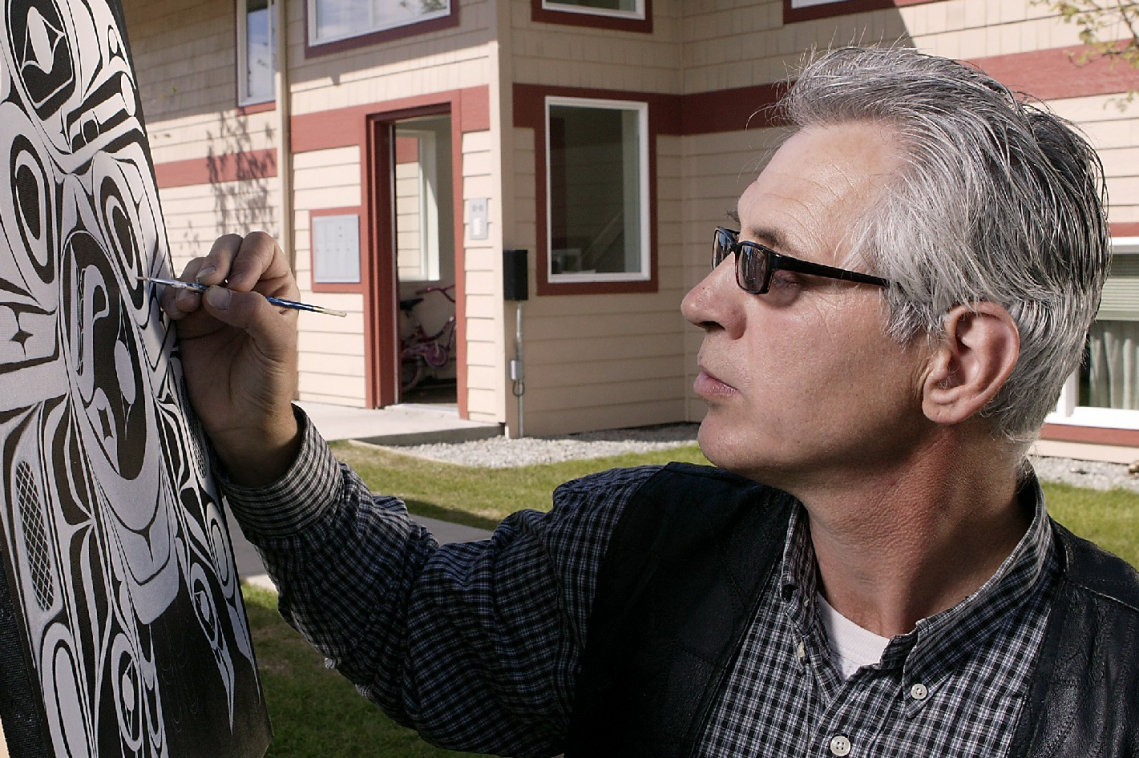This is one of six organizations participating in the Community Development Investments (CDI) program. For more information about the program itself, click here.
Cook Inlet Housing Authority (CIHA) is a regional native housing authority established by the State of Alaska in 1974. Our mission is to create housing opportunities that empower our people and build our community by using housing as a tool for broader community development outcomes. Our approach of strategically developing a variety of housing investments creates powerful changes in our communities, stabilizing families and neighborhoods, catalyzing reinvestment, and empowering people to change their own lives.
CIHA is exploring how collaboration with artists and the use of creative strategies can help to achieve our community development goals. Our artist partners have helped us approach our work from new and interesting angles, using creative tactics that encourage us to invite community members whose voices may not normally be heard, into the conversation to be part of the exploration of problem solving.
Use the tabs above to read more!
All of Alaska is Indian Country. The Dena’ina people originally inhabited the lands of southcentral Alaska, this region includes the site where Anchorage was settled by western pioneers. Cook Inlet Housing Authority (CIHA) is a regional native housing authority established by the State of Alaska in 1974. We are funded in large part by the Native American Housing and Self Determination Act (NAHASDA). As an innovator in Indian Housing, we provide housing opportunities for eligible Alaska Native/Native Americans and everyone else in our community. By intentionally choosing to serve everyone in the community we serve more Alaska Native/Native Americans through leveraged finances and build an inclusive community. Our mission is to create housing opportunities that empower our people and build our community by using housing as a tool for broader community development outcomes. Our approach of strategically developing a variety of housing investments creates powerful changes in our communities, stabilizing families and neighborhoods, catalyzing reinvestment, and empowering people to change their own lives.
As a guiding principal in our neighborhood redevelopment work, CIHA has adopted the model and values of an Alaskan village. In Native Alaskan culture, each person is essential and brings capacity to the entire village. Everyone adds value and helps make the village successful. It’s a model that embraces sharing what you have with others in order to make the collective village stronger. As CIHA works in our role as a community developer, we keep these village values at the forefront of our decision making process.
Our dedicated staff of 140 is passionate about community building at all scales and phases of affordable housing work -- from the conceptual stage of a project to the on-going operations of a 1,400 unit (and growing) portfolio. Currently, we house almost 3,000 Alaskans by developing, building, and owning affordable housing. We also engage in outreach and education, at all levels of government, in order to create favorable conditions for the development and financing of affordable housing.
Cook Inlet Housing has evolved over its forty-four year history from spending down HUD funding annually to leveraging a multitude of funding sources and building resources, reserves and partnerships that allow for continued, strategic investments to further affordable housing. Through this approach CIHA has transitioned from a provider of solely senior housing, to a developer that provides a more diverse range of housing to meet community needs. Most importantly, as a visionary organization that serves all eligible Alaskans with a variety of housing opportunities, we have leveraged Indian Housing funding with other sources of funding, to multiply our development capacity, allowing us to house more Alaska Native and Native American families and elders as a result of this increased capacity and investment.
~
CIHA hosted a community forum to kick-off the CDI program in October 2015. Click here to view the program from the event and you can watch the video below.
CIHA works to provide affordable housing in the Cook Inlet region of Southcentral Alaska. Our reach and coverage is over a large geographic region (roughly the size of Pennsylvania), but our work takes place where it matters most – at the neighborhood level. Working with neighborhoods and communities to identify their greatest needs and desires and finding the right opportunities for sensible and sustainable development.
Anchorage is a young city, but like many boom towns, early development lacked intentional planning. Neighborhoods that were built in the early days of pioneering settlers, consisting of quaint cabins and small homes, quickly became overrun by the need for more housing during the building of the Alaskan pipeline. In the haste of developing to accommodate the boom, poorly built multifamily housing was added to original neighborhoods, infrastructure lagged behind and the character and feel of entire neighborhoods shifted into something unrecognizable.
Each neighborhood where CIHA does work has its own unique set of assets, challenges and deficiencies. In all cases, CIHA is faced with the incredibly high cost of building in Alaska, from materials and labor to inadequate infrastructure. These costs make it incredibly challenging to develop affordable housing options in Alaska.
Although our true service region is large, most of our work takes place in Anchorage, which is a both a state hub and a global village. Anchorage is home to 40% of the state’s population, and is a place of tremendous diversity. Represented are a wide variety of Alaska Native villages and tribes, as well as many groups of new Americans arriving as refugees from their home countries. Demographics in Anchorage are changing rapidly. Many of these diverse minorities are over represented in low income households. CIHA works to remain flexible in meeting the changing needs of the community, though it has been and remains challenging to engage marginalized community members and stakeholders. We think some of the solution to this engagement challenge may be solved through collaboration with artists and creatives, who can help us find more effective ways to invite diverse community members to participate in these important conversations.
CIHA is exploring how collaboration with artists and the use of creative strategies can help to achieve our community development goals. Our artist partners have helped us approach our work from new and interesting angles, using creative tactics that encourage us to invite community members whose voices may not normally be heard, into the conversation to be part of the exploration of problem solving. We believe that the arts, artists and creatives can and should play a significant role in community engagement and community expression. This includes pushing innovation, creative placemaking, identifying and amplifying cultural assets, and celebrating local history and Alaska Native culture.
CIHA’s work with the arts and culture sector has taken us down a variety of paths, from community conversations about micro unit apartments to business disruption mitigation due to a road construction project. As result of infusing arts and culture into the way we work, we have changed and challenged our internal learning process to allow for better community engagement opportunities. We have also adapted our external role within the community to better address community challenges.
Collaborating with artists in community development work forces us to better articulate and frame our challenges in a way that engages non-developers and helps create teams that are invested in positive, feasible outcomes. Our aim is to find the sweet spot for artists to creatively address those challenges with us.
When we have been able to partner the right artist with the right community challenge, we have learned more than our initial scope set out to accomplish.
Living Big, Living Small
In the case of examining the challenge of micro unit apartments, we teamed with local set designer/artist Sheila Wyne to build a life sized “set” that mimicked a 286 SF micro unit apartment. Sheila created a kit of moveable furniture and appliances, and a system of temporary wall structures that could be configured in the space to model a variety of floorplans. The project was dubbed ‘Living Big, Living Small’ to reflect the shift from looking at designs in 2D on paper to full scale model, while examining small space living. Sheila worked with the in-house CIHA construction crew to build the pieces and parts for the set. We collaborated with other consultants to create a list of stakeholders to invite to play in the set to create the best layout possible. A total of 16 stakeholder groups ranging from professionals, to homeless teens, to CIHA frontline and operations staff members, to a group of local creatives participated in two hour build sessions.
While we thought we were creating a space for layout design discussion, we realized after the first group participated that this exercise was uncovering much more. Our post-exercise debriefs with each group allowed for broad and open discussion about community, including who might live in a small apartment, where would they make the most sense in our community, and what other amenities might need to be present in a neighborhood to support smaller living. The participants envisioned this housing for themselves, their parents, their children, their neighbors – a real person with housing needs and not simply a person who lived in “subsidized housing”. For many participants, the exercise truly showed that you could fit a lot of amenities comfortably into a small footprint. For others, it was an opportunity to think about and discuss broader community needs. And fundamentally for CIHA staff, Board, and designers – our eyes were opened to new housing approaches and unit sizes that could reach a deeper level of affordability.
Living Big, Living Small from Cook Inlet Housing on Vimeo.
Mysterious mimes
Road projects are always controversial in Anchorage; poor engagement, design, and implementation had stalled the needed improvement on Spenard Road for ten years. As members on the local business association, we knew local businesses saw the pending road project as a threat to their livelihood. On the other hand, we also believed that the right investment would help correct aging and inefficient infrastructure, non-existent pedestrian and bus facilities, and support the need for new housing investment.
Through many conversations with two local performance artists, Enzina Marrari and Becky Kendall, a common point of interest was found from which the artists were able to create a powerful artistic intervention. Enzina and Becky created an interactive spectacle which grew as the construction project grew from spring to summer. MIME SPENARD began stealthily and mysteriously with a small number of participants but culminated in a chance for everyone to join MIME Day. Becky and Enzina worked with business owners to have mimes present at their businesses and used social media to promote their locations. Mime training days took place so that what began as a small troupe of mimes swelled to 100 mimes by MIME Day. Media outlets picked up on the presence of mimes, but the artists were coy and quiet on the full story, focusing only on getting the word out that businesses were still open during road construction. The full reveal was part of a weekly newspaper cover story featuring the lead mime Brian Hutton.
Again, the outcomes from the collaboration between CIHA and the artists exceeded our original scope and intention. The event generated good will with business owners and community conversation about Spenard. Becky and Enzina’s organizing around MIME SPENARD created a more compassionate understanding between those advocating for the road project and the local business owners that would be most directly affected. Additional conversations continue as we examine how we approach future road projects and how to better involve the community, artists/creatives and particularly the businesses early in the process to further strengthen the potential impact that these types of interventions can have on both the bottom line and willingness of businesses to support critical road work.
The Mime Spenard Project from Cook Inlet Housing on Vimeo.
Reclaiming Asphalt project
Challenged to think about CIHA’s Spenard Road real estate assets as an opportunity to provide a more welcoming place, focused more on people and less on cars, CIHA collaborated with artist Chad Taylor on the Reclaiming Asphalt I & II projects.
The projects consisted of several installations around the block where CIHA owns contiguous properties along Spenard Road: an old post office, an old church, and our office headquarters. Chad worked with a cadre of artists to create a welcoming semi-public plaza, recycled planters that add a needed dose of green are moved in ever-changing patterns, an interactive messaging wall, and the creative deconstruction of fencing between lots to begin to envision the previously disparate properties as a vibrant campus that is connected physically and programmatically. We also challenged the artists to use this opportunity to demonstrate better sidewalk widths than the deficient and dangerous 3 foot pathways which currently exist, which they accomplished through a colorful, horizontal mural that depicted 5-foot, 8-foot and 10-foot wide sidewalks. The project also includes vertical installations that celebrate the neighborhood’s historic importance as Dena’ina land as well as its more recent, not so glorious past as a strip-club and massage parlor destination.
The community has responded enthusiastically on what the campus could be –with the former church transformed into a cultural community hub, a collection of strong local businesses, and a place that sees improvements to the streetscape that is intentional and reflective of the people who live here.
Overall, all of these experiments and experiences have shown us that engaging artists and creatives to help solve community challenges, is a powerful tool for successful community engagement and community development.
Reclaiming Asphalt from Cook Inlet Housing on Vimeo.






